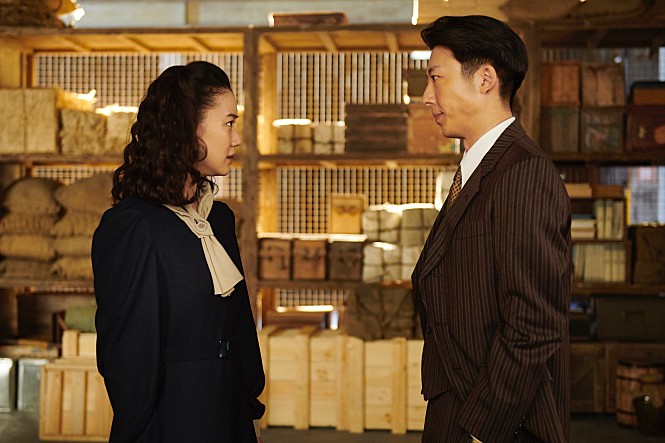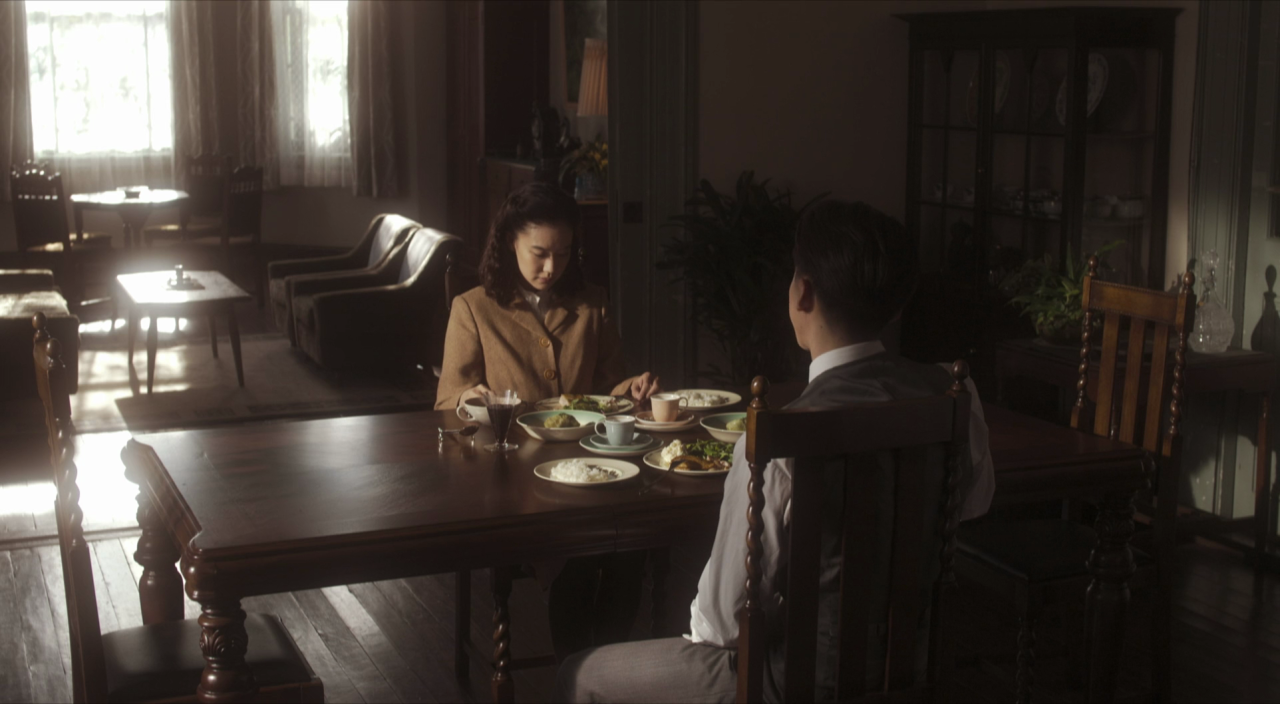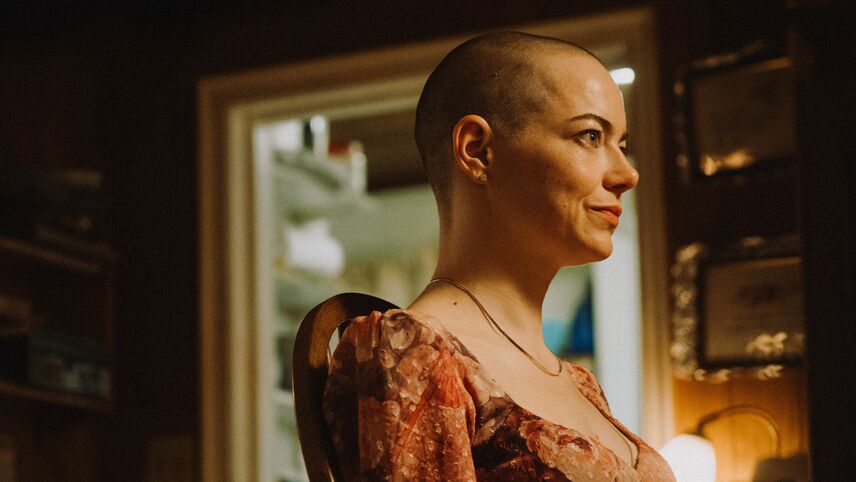![]()
Once again succeeding on a artistic level, Wife of A Spy, which is acclaimed Japanese filmmaker Kiyoshsi Kurosawa’s 23rd film which was released on Japanese Television last year during the pandemic, but released theatrically here in the United States this fall season, where it premiered at 2020 Venice Film Festival, in which it won the honorable and prestigious Silver Lion award. The film is perhaps Kurosawa’s grandest film to date; narratively, however, it may also be his most dry and melodramatic.
Boasting a thrilling premise, this historical period-piece interlaces a story of a marriage breakdown with the story of resisting the rise of Japanese nationalism in 1941. The film is still an intriguing and spellbinding suspense drawer that stars Japanese actors Yū Aoi and Issey Takahashi, but with its uneven pacing (especially in the beginning), a lack of tension, and muddled narrative fails to ignite on the same level as Kurosawa’s previous masterwork To The End of the Earth which was released last year with sadly very little attention. A film that scored very high on my top ten last year last year, Wife of A Spy isn’t as challenging or as engaging as To the Ends of the Earth, however, the film still a commanding and satisfying historical drama that holds it’s own merits that offer many gripping moments.
Kurosawa is a very versatile director who has always been determined in pushing himself in different styles and genres. The good news is that he appears to still be in a creative streak where he has released a feature film almost every year for the last 9 years. Five of which in the last 25 years have reached to some type of universal acclaim in the United States (To the Ends of the Earth, Creepy, Tokyo Sonata, Pulse, and Cure), Kurosawa has proved that he can craft horror films with Cure (1997), Creepy (2016), and the much celebrated Pulse (2001), as well as sci-fi odyssey’s Before We Vanish (2017), and very small intimate dramas like Tokyo Sonata (2008) and To The Ends of the Earth (2020) which I consider his most artful, personal, and mature film to date.
At the center of Wife of A Spy is an espionage thriller about Satoku (Aoi) and her mysterious husband Yusuaka (Takahashi. While the first half of the film focuses more on Satoku and his espionage and exchanges with other secretive players, the second half involving Satoku remains the most compelling. Co-scripted by Kuroswa, Tadashi Nohara, an Ryūsuke Hamaguchi (Who directed the highly acclaimed Japanese film Drive My Car released later this Nov), certainly a group of talented creators do a serviceable job with their historical research on historical events that feels very accurate and natural.
Saga is set in Kobe, Japan circa 1941. Satoko begins to suspect something unusual is happening as her husband is never home and she fails to reach him, even when they are around each other she can sense something feels distant. At first she begins to suspect that he’s seeing another woman, which makes sense because she can sense he’s locking eyes with a business partner Hiroka (Hyunri) Eventually Hiroko is murdered as her body is found in the ocean, which perplexes Satoko even more.
Yuskua appears to grow more distant and secretive, which leads Satoko in investigating his whereabouts and prying others about what he’s doing. She ends up confronting Fumio (Ryota Bando), Yuskua’s nephew, who ends up quitting a port business so he can write a novel about the secretive stuff he witnessed in Manchuria, China where espionage and secrets are certainly being exchanged. It becomes clear that Fumio and Yuskasa are allies of China and part of their own band of Japanese resistance rebels that defy the Japanese emperor Hirohito and his nationalist government. Yusaku uses the excuse that he travels there to get cheaper goods, and that he wants to visit there one more time before the war inevitably breaks out. However, Sotako can sense something is going on, which leads Satoko discovering some damaging information on how the resistance group is somewhat behind a biological weapon which is known as the The Kaimingjie germ weapon attack, which was a Japanese biological warfare bacterial germ strike against China, which would lead to more involvement from United States and European allies to back China and other allies to rage war against the Japanese Empire, in return of stopping fascism and militarism from spreading further into the world.
Kurosawa has quite the premise and historical context to work with. Sadly, he doesn’t imbue the material with too much dramatic tension or suspense, but instead creates a visual sense with lighting schemes and décor of mostly muted colors and diffused lighting to capture a visual sense of impending menace and an atmosphere of hopeful uncertainty. The earlier tale is muddled by design, replete with some dry drama that riddles with murky plotting in relating to Sotako’s perspective which leads to jealousy and uncertainty, unfortunately Kurosawa spells out these elements more as opposed to The Ends of the Earth which felt more observational and internal.
In contrast, Wife of a Spy has a very strong final hour that brings a lot of deep ambiguity where it allows the viewer to ponder what Yusaku’s true intentions are. We are left pondering if Sotako was a pawn the entire time? Was there a greater purpose to their marriage than she even realizes? We see a film reel of an amateur 16mm film that stars Satoko in that examines that the triangle between Fumio, Yusaku, and Satoko is every bit as much an illusion as film is. Was she starring in a production of something more grandeur and self-fulfilling than she realized? It’s a fascinating metaphor that will lead to analysis and discussion for audiences who embark on the overall rewarding viewing.
Since the story is told distinctly in Satoko’s perspective, Yusaku’s character remains more enigmatic as well as his motives. Ultimately, the film belongs more to Yū Aoi, who gives a layered performance as a puzzled wife who finds acceptance to her husband’s schemes , only to find herself caught in a web of deception and contemplative decisions. It’s a very commanding performance and fascinating role, her character brings a lot of credibility even though more passion with Issey Takahashi would have benefited the film greatly.
Despite some imperfections and dramatic issues, Kurosawa’s films always deliver contemplative themes with rich visuals and exquisite craftsmanship. Kurosawa has made a very visionary film with top-notch collaborators that echo the framework of John le Carré spy novels with it’s examination of history, espionage, and duplicity. Wife of A Spy in the end becomes a sophisticated, intriguing, and mostly richly dramatic morality tale, which is also combative against fascism, imperialism, and nationalism.












Great review, I’m pleased to see the DFT is back open and taking safe guidelines.
I will be there at the DIA to watch it!
Great review! I would love to see this movie at the DFT. thrillers, suspense and romance.
Great review! I would love to see this movie at the DFT. thrillers, suspense and romance and betrayal.
I really appreciate this post. I have been looking all over for this! Thank goodness I found it on Bing. You’ve made my day! Thanks again
So many things has been going on for like 6months now yet i could not get solutions but all praise to (WISETECHHACK @ GMAIL.COM) I emailed this hacker yesterday for an urgent iPhone Xr hack, after he gave me full details on how the hack would look like then I proceeded and i was able to get all I paid for without , right now am currently in full control of the iPhone Xr without physical access to the phone. (WISETECHHACK @ GMAIL.COM)
Thanks for sharing. I read many of your blog posts, cool, your blog is very good.